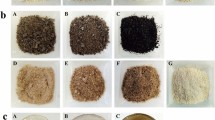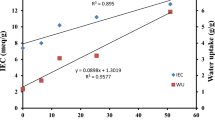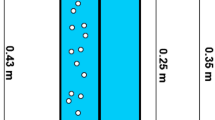Abstract
CHITOSAN, a derivative of chitin obtained by alkaline hydrolysis, has long been known to dissolve in dilute acids and to develop a distinctive violet colour with iodine in acid medium1. A test based on these properties2 has been widely applied for the detection of chitin in arthropod cuticles and other invertebrate structures. Under undefined conditions, however, chitin has been reported to show a reluctance to display itself in the tanned exocuticle of certain myriapods3. Similarly, the hyaline exocuticle of the scorpion Pandinus imperator, though presumably containing chitin, was found to give a negative iodine–chitosan colour test4.
This is a preview of subscription content, access via your institution
Access options
Subscribe to this journal
Receive 51 print issues and online access
$199.00 per year
only $3.90 per issue
Buy this article
- Purchase on SpringerLink
- Instant access to full article PDF
Prices may be subject to local taxes which are calculated during checkout
Similar content being viewed by others
References
Rouget, C., C.R. Acad. Sci., Paris, 48, 792 (1859).
Campbell, F. L., Ann. Entomol. Soc. Amer., 22, 401 (1929).
Blower, G., Quart. J. Micro. Sci., 92, 141 (1951).
Kennaugh, J., Quart. J. Micro. Sci., 100, 41 (1959).
Dennell, R., and Malek, S. R. A., Proc. Roy. Soc., B, 143, 414 (1955).
Krishnan, G., Ramachandran, G. N., and Santanam, M. S., Nature, 176, 557 (1955).
Author information
Authors and Affiliations
Rights and permissions
About this article
Cite this article
MALEK, S. Chitin in the Hyaline Exocuticle of the Scorpion. Nature 198, 301–302 (1963). https://doi.org/10.1038/198301b0
Issue date:
DOI: https://doi.org/10.1038/198301b0
This article is cited by
-
Bildung peritrophischer Membranen von Decapoden
Zeitschrift f�r Zellforschung und Mikroskopische Anatomie (1969)



